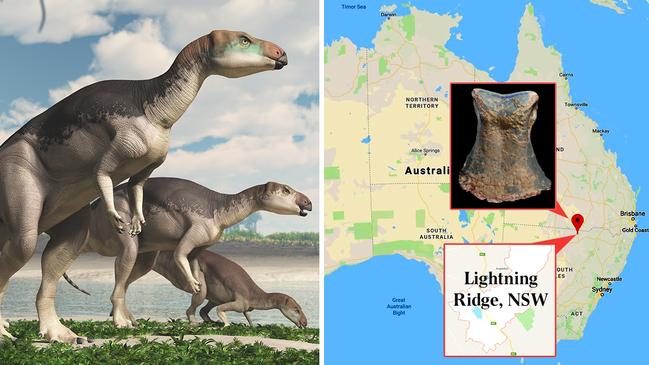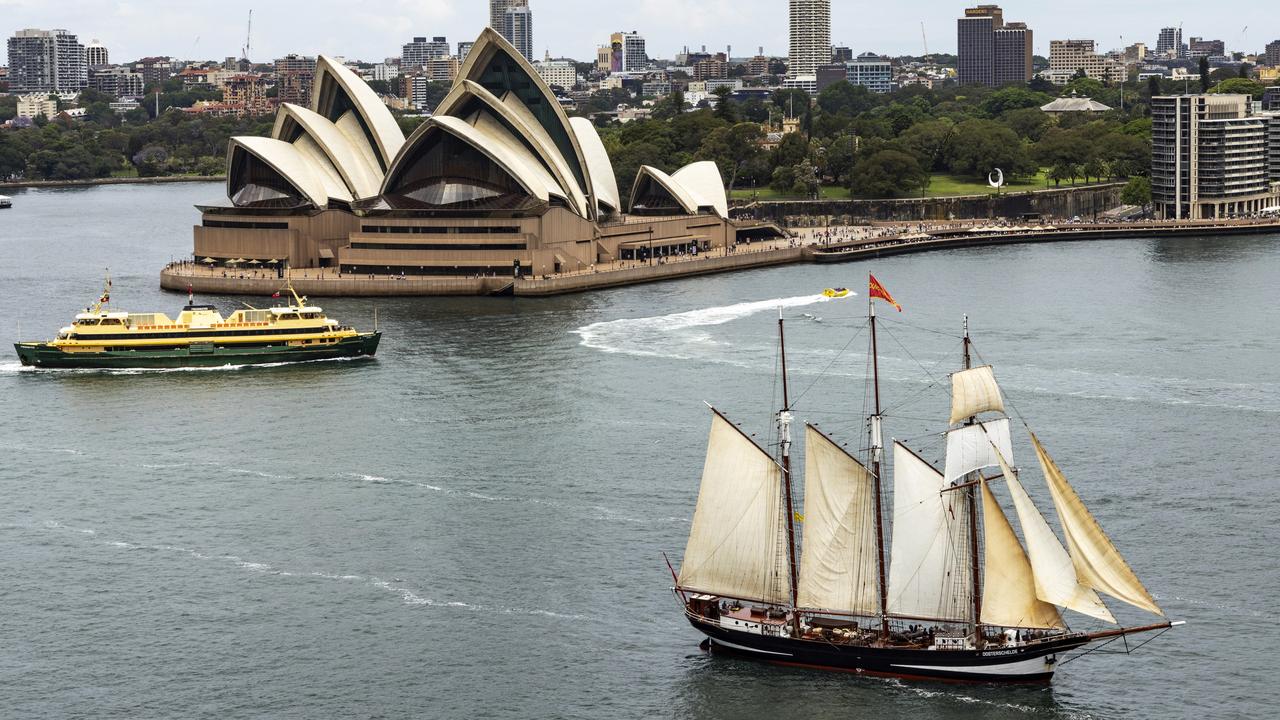Lightning Ridge opal mine surrenders entire herd of dinosaurs
In an Australian first, an entire herd of 100 million-year-old dinosaur remains is identified.

The outback NSW town of Lightning Ridge yields opals with a total annual value of $70 million and, not infrequently, the fossilised remains of dinosaurs.
But now, in an Australian first, the remains of an entire herd of 100 million year-old dinosaurs has been identified, together with a new species and the world’s most complete opalised dinosaur.
The finds were announced overnight in the US-based Journal of Vertebrate Paleontology by a team of Australian scientists led by Phil Bell of the University of New England, Armidale. Dr Bell said he was “stunned” by the number of bones found in an underground opal mine.
“We initially assumed it was a single skeleton, but when I started looking at some of the bones I realised we had four scapulae (shoulder blades) all from different sized animals,” he said.

“There are about 60 opalised bones from one adult dinosaur, including part of the braincase, and bones from at least another three animals.”
The opalised fossils were discovered in 1984 by opal miner Robert Foster 10m underground in an opal field called “the Sheepyard”, but it wasn’t until 2015, when they were donated to the Australian Opal Centre by Foster’s children, Gregory and Joanne, that scientists began to study them. The new dinosaur has been named Fostoria dhimbangunmal, in Foster’s honour, and the new species has been named dhimbangunmal (pronounced bim-baan goon-mal), meaning “sheep yard” in the local Yawaalaraay Aboriginal language.

Parts of four Fostoria skeletons were unearthed, ranging from small juveniles to adults that might have been 5m long, leading palaeontologists to conclude they were part of a small herd.
Jenni Brammall, palaeontologist and special projects officer of the Australian Opal Centre, described Fostoria as the most complete opalised dinosaur skeleton in the world: “Partial skeletons of extinct swimming reptiles have been found at other Australian opal fields but for opalised dinosaurs we generally have only a single bone or tooth or, in rare instances, a few bones. To recover dozens of bones from the one skeleton is a first.”
She said Fostoria was a plant-eating iguanodontian dinosaur closely related to Muttaburrasaurus discovered in 1980. The discovery comes on the back of the discovery of a small plant-eating dinosaur also from Lightning Ridge, Weewarrasaurus pobeni, which was named by Dr Bell and colleagues late last year.
“The rate of discovery is astounding. On average there’s at least one new dinosaur discovered around the world every week,” Dr Bell said. ‘It’s an exciting time for dinosaur lovers everywhere.”
The Journal of Vertebrate Paleontology said, while miners often encountered opalised fossils at Lightning Ridge, they were not usually recognised until after the opal-bearing sediments had been excavated, crushed, washed, and tumbled to expose the opal.
“Many of the recovered fossils are broken, abraded and lack provenance.” The findings at the Sheepyard locality, it said, were “therefore exceptional”.


